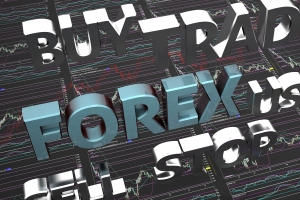Even the most experienced stock traders can fail miserably in forex if they treat the two markets similarly. While the stock markets involve the transfer of ownership, the currency market involves pure speculation. Fortunately, the currency market offers more flexibility than other markets; therefore, it is important to learn forex trading in order to reap maximum profits from this giant market.
The forex market is the largest financial market in the world. Since investors do not buy anything physical, the currency market can be confusing. Forex is simply the buying and selling of currencies. In a typical trade, one currency is bought while another one is simultaneously sold. In currency trading, when a trader buys, say, the U.S. dollar, he/she is basically purchasing a share in the U.S. economy and, in effect, betting that the U.S. economy is doing well, and is likely to get better. Once the trader sells those shares back to the market, hopefully, he/she will end up with a nice profit.
The rate of exchange of a certain currency against other currencies is an indication of the economic condition of that country, compared to other countries’ economies. In currency trading, currency symbols always have three letters, e.g., EUR, USD, GBP, or JPY. The first two letters represent the country’s name while the third one identifies the name of that country’s currency. Take GBP for instance. GB stands for Great Britain, while P stands for pound.
Currencies are traded in pairs through a dealer or broker. For example, BGP/JPY or EUR/USD. The first currency of a pair is referred to as the base currency, while the second one is called the quote currency. The pair, therefore, shows how much of the quote currency is needed to buy one unit of the base currency. There are three types of currency pairs:
• Major pairs
• Crosses
• Exotic pairs
The majors all have the U.S. dollar on one side and are the most popular, liquid and heavily traded pairs. Examples include: EUR/USD, AUD/USD, GBP/USD, and USD/JPY. The crosses are pairs that do not include the U.S. dollar. Before the crosses, traders had to convert their currencies into U.S. dollars before converting their dollars into the currency they desired. With the creation of crosses, traders can now bypass this process and simply convert their currencies into their desired currency. Examples of crosses include: EUR/GBP, EUR/CHF, EUR/JPY, and GBP/JPY. Exotic pairs have a major currency and the currency of an emerging economy, e.g., Mexico, Hong Kong, Brazil, and South Africa, on the other side. Examples include: USD/HKD, USD/MXN, and USD/ZAR.
The profit potential is why many people are opting to learn forex trading. The forex market offers several advantages over trading in stocks, futures and other equities. Some of these advantages include: no commissions, no middlemen, low transaction costs, and low barriers to entry. In addition, the forex market is a high–liquidity 24–hour market.
